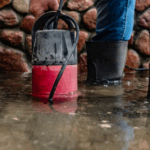How To Make Sure You’re Fully Protected As A Florida Homeowner

Homeowners in Florida have been dealing with an issue as challenging as rising home prices—and that’s a fight to get sufficient homeowners insurance at an affordable price. Many homeowners have faced a worrisome rise in rates or an even more troubling inability to get coverage at all. If you’re concerned about whether your home and belongings are protected, here’s what you need to know about getting home insurance in Florida.
Am I affected by Florida’s rising homeowners insurance rates?
While the coverage challenges are widespread in Florida, they aren’t affecting everyone equally. As with most types of home insurance, your premiums will depend on how much your home is worth, how old it is, and the type of coverage you opt for — most notably whether it’s “replacement cost,” which will cover the cost of replacing items at today’s cost, or “actual cash value,” which only covers the depreciated cost of your belongings.
Another key consideration will be where you are located as coastal properties are more liable to sustain wind damage, flooding, and other extreme weather-related hazards.
The only way to know how Florida’s looming insurance troubles will affect you is to watch your rates, and contact your carrier if you see an unexpected increase. Of course, it’s always smart to compare rates just to make sure you’re getting the best combination of price and coverage. (Matic makes it easy.)
What are some of the types of coverage I should pay attention to?
Flood coverage
The most important supplemental policy to consider is flood coverage; many homeowners are surprised to learn that damage from flooding is not covered under the majority of homeowners insurance policies.
In a high-risk flood area, you are required to have flood insurance if you have a federally backed mortgage. However, even if you aren’t mandated to have flood insurance, it’s a wise purchase to protect your home and belongings, so ask your insurer about adding optional flood coverage. The National Flood Insurance Program (NFIP) says that 40% of its claims come from properties that are located in moderate-to-low risk flood areas.
You can find out more about flood insurance in Florida here and look at flood zone maps at Floodsmart.gov, a website maintained by the Federal Emergency Management Association (FEMA).
Hurricane coverage
While flooding is not covered by your standard policy, hurricane damage is; however it follows a different process than regular claims.
Hurricane coverage entails a separate deductible that is triggered by losses that result from a hurricane, as declared by the National Weather Service. This deductible applies for damage that occurs from the time a hurricane watch or warning is issued up to 72 hours after the watch or warning ends. The deductible is calculated as a percentage of your home’s value and is typically available at $500, 2%, 5%, and 10%.
Policies may vary, so it’s wise to contact your insurance carrier to find out exactly what is covered, from structural repairs to replacement of your belongings to reimbursement of your living expenses if your home is uninhabitable.
How can I lower my costs?
Although coverage can be steep, there are ways to lower your costs. Insurance companies in Florida are required to offer discounts on the hurricane windstorm portion of insurance premiums for residential properties that take certain precautions that limit the damage of hurricanes, such as securing your roof and adding hurricane shutters to protect your windows from flying debris.
To get the discount, you’ll need a qualified inspector to document the property’s wind mitigation features. You can find out more in the “Wind Mitigation Notice of Premium Discount Form” and in the “Uniform Mitigation Verification Inspection Form.”
Another common insurance policy practice in Florida is the “4-point inspection,” which looks at your home’s roof, electrical system, HVAC, and plumbing, to make sure these key features are in working order.
Most insurers require it on homes that are more than 40 years old, but be sure to talk to your insurer about their rules. Note that this inspection typically doesn’t yield discounts, but it’s worth asking.
What if I can’t get the insurance I need?
Many Florida homeowners have found that despite their best efforts, they are unable to get coverage at all, and the problem is escalating, finds the Florida Office of Insurance Regulations. In July 2021 alone, four companies asked to drop more than a combined total of 54,000 customers.
If you find yourself in a situation where other carriers deem your property too costly or risky to insure, there is a final option — you can seek coverage from the state-run Citizens Property Insurance Corporation. Known as an “insurer of last resort,” it is designed to help keep costs manageable and cover citizens who can’t find a policy in the public market. Under Florida law, property owners may only seek a policy from Citizens if coverage is not available to them from a Florida-authorized insurance company or if premiums from that company are more than 20% higher than the premiums for comparable coverage from Citizens.
While this coverage option is better than nothing, it will be a very basic policy that might not cover everything you need. Typically, Citizens’ polices have high deductibles and limited or even excluded water coverage. Most people who insure through Citizens should also investigate supplemental insurance, such as flood insurance. As discussed above, standard homeowners policies do not cover flooding from natural disasters, like heavy rains and hurricanes, so it’s vital for a homeowner to add a specific flood policy to their coverage, especially if you are using a basic policy like one from Citizens.
Another wise move is to look into umbrella insurance, which can provide additional coverage for property damage. It also protects you from out-of-pocket expenses for another person’s legal bills if you’re found at fault — for example, if a tree in your yard hits your neighbor’s house.
Find out before a disaster strikes
The time to find out whether you have adequate coverage is now. Talk to your carrier about exactly what your policy does and doesn’t cover so you can determine your next steps, whether it’s seeking additional coverage or setting aside money to cover a potential tragedy. The wisest step is always to compare rates to give you the peace of mind that you’re getting the best possible rates and coverage.



